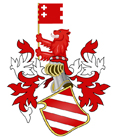Durdevac
Durdevac Fortress was built in the 15th century as a border and customs town of the Serbian family Kosaca. It is located on the left bank of the river Drina in the part where the canyon of the Drina is the narrowest. It was built for the purpose of defending the Principality of Herzegovina from the invasion of the Hungarian army. It was built in 1435.
Name: Durdevac
Location: Srebrenica (Republika Srpska)
Purpose: Border and customs control
Year of construction: 1435
Builders: Kosaca family (duke to Saint Sava Stefan Vukcic Kosaca)
Year of destruction: 1465
The fortified town of Durdevac was built in the first half of the 15th century as part of the defense system of the Principality of Herzegovina. After the independence of the Principality of Herzegovina from the Kingdom of Bosnia, the Duke of St. Sava, Stefan Vukcic Kosaca, decided to create a system of defense and control of his principality. It was built on a selected location as a strategic point of view of the Drina riverbed. In that part, the riverbed is the narrowest and provides good visibility of trade routes as well as access from the north. The fortress had a square tower measuring 31 meters. The height of the tower was 7 meters. This provided better visibility for the army, which was permanently stationed there. The fortress stretched towards the bed of the river Drina, whose ramparts were up to 3 meters high and up to 25 meters long. The whole system provided good protection for the army, which was permanently stationed there.
In 1444, Durdevac is mentioned in Dubrovnik historical documents as a border and customs place of the Kosaca family, where customs was paid for caravans coming from the north from Hungary. Customs duties were part of the agreement with Dubrovnik reached by the Duke of St. Sava, Stefan Vukcic Kosaca.
02/19/1444 year in the charter of the Aragonese-Neapolitan king Alfonso V is mentioned as one of the cities belonging to the Kosaca family under the rule of the Duke of St. Sava Stefan Vukcic Kosaca. It lists his estates and the cities he rules. It is a question of recognition of the state of the Principality of Herzegovina. Durdevac is also on the list of cities.
01/20/1448 In the charter of the Roman king Frederick III, it is also mentioned as one of the cities ruled by the Kosaca family headed by the duke. The question is the recognition of the independence of the Principality of Herzegovina by Rome. According to that charter, the Durdevac fortress was part of the Principality of Herzegovina.
In 1452, in the second charter of the king of Aragon, Alfons, it is mentioned as one of the cities ruled by the Kosaca family, headed by the Duke of St. Sava, Stefan Vukcic Kosaca. Confirmation of the statehood of the Principality of Herzegovina because those were very troubled times and the borders changed very often.
In 1465, with the conquest by the Turkish conquerors, the city was destroyed and its function as a customs point ceased. It was conquered shortly before the conquest of the Samobor fortress.
03/10/1466 year in the letter of the Duke of St. Sava Stefan Vukcic Kosaca, which was sent to Dubrovnik, it is stated that the city of Durdevac and Samobor were conquered by the Turkish conquerors and that they are no longer under his rule. These are trade correspondence with Dubrovnik in order to define customs regulations.
DOCUMENTATION:
